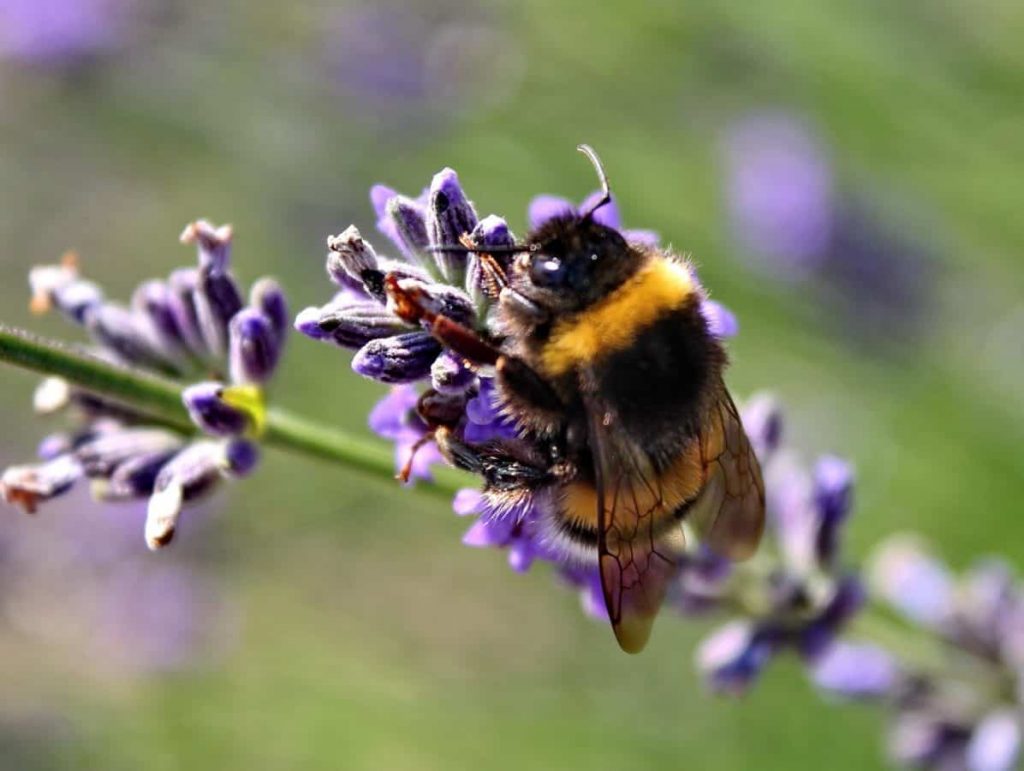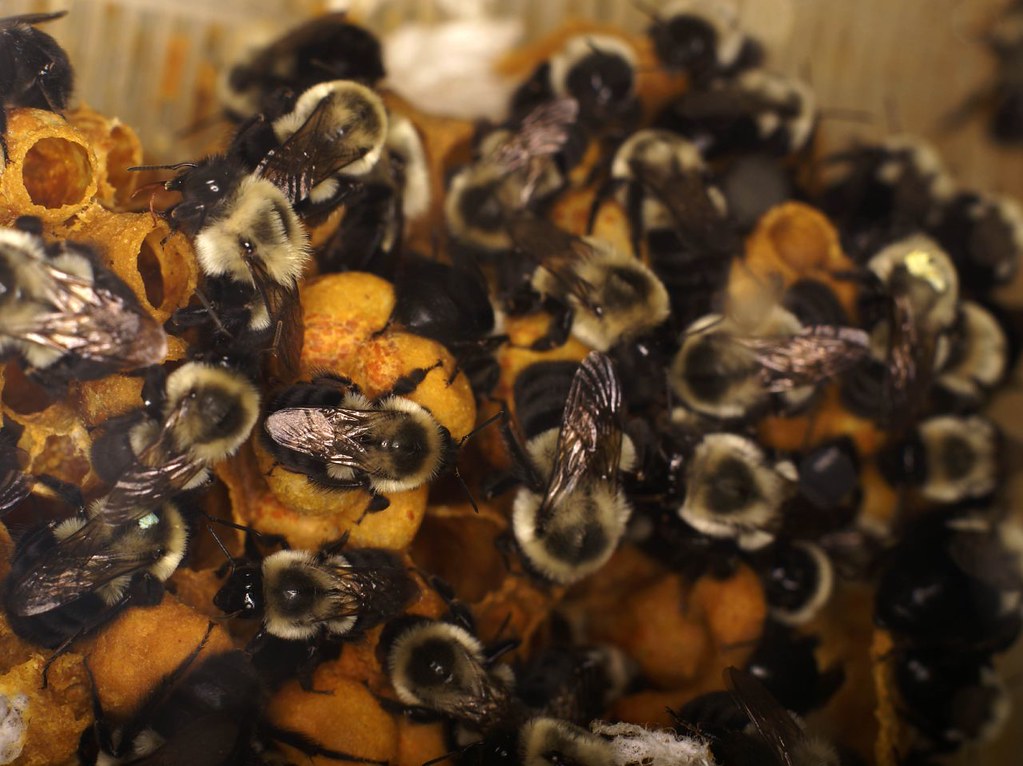Can you guess the subject of today’s topic? I’m black and yellow, with stripes! I really love flowers and I produce a sugary, sweet, sticky treat. What am I?!
That’s right, today’s topic is about none other than our pollinator pals, bees! Bees are pretty special bugs. They’re considered social insects and live in huge colonies of up to 200 workers at times! There are many species of bees including 400 different types of bees in Ontario alone! Some species of bees that might sound familiar to you include bumblebees and honey bees, but there are so much more! Ever heard of carpenter bees? Leaf-cutter bees? Mining bees? Sweat bees? Each species of bee is just a little bit different, and have a variety of foraging, nest building and behavioural habits.
For today, let’s focus on one species of bee so there aren’t too many bee facts buzzing around our heads! Let’s talk about the great bumblebee. A bumblebee is a particular species of bee. Bumblebees get their name from the clumsy, “bumbling” way they fly around. Their characteristic buzzing sound is the source of their scientific name, Bombus, which means “booming” in Latin. How interesting! A bumblebee’s diet consists of nectar (which is considered a carbohydrate) and pollen (which is a protein). They get both of these nutrients from flowering plants. Bumblebees particularly enjoy flowering mint plants, asters, lavender and snapdragons.

Leading a bumblebee hive is a bumblebee queen. Unlike the queen honey bee, queen bumblebees have a bit less of a glamorous life. Queen bumblebees are hardworking and are in charge of many roles within the bee community. Bumblebees have an annual life cycle, which means they die before winter – but not the queen! She survives over the winter by burrowing down into the ground to wait out the cold, then once spring arrives, the queen is brought out of her deep sleep and the work begins! She must find a new nesting site for her hive, seeking out ideal spots like tree cavities, holes in the ground, or nice patches of grass. Once the queen has found the ideal nest site, it’s time to lay her first batch of eggs. She must keep the eggs nice and toasty, and once they hatch she must tend to her little bee babies! Bee babies – aka larvae – are fed pollen and nectar until they grow up to become worker bees. Now that they are older, they can help out with tasks around the hive, like foraging and nest-building. A queen’s final task is to produce a new batch of queens and males. Once these bees mate, the queens will disperse and burrow underground for winter and the cycle continues!

It’s clear that bumblebees are pretty neat creatures – and they’re important ones! As I’m sure you know, bumblebees are extremely significant pollinators. Many fruit and vegetable crops depend on bees for pollination and without the hard work of bees, we’d sure be in trouble! Sadly, many bee populations are declining all over the world due to habitat loss and exposure to toxic chemicals, like pesticides. In order to help out our bumblebee buddies, you can create pollinator gardens to increase their habitat, be mindful of the products you use that might end up in the environment or adopt a western bumblebee to help our partner, Nature Conservancy Canada (NCC) as they work to restore this important species throughout southern Saskatchewan.


Hi
I like bees
Cool
Sorry I Sede Boo Hoo Will you Ever Forgive me
Fuzzy but sharp!
Very nice loved it
Sorry I Sede Boo Hoo
Wow! That is a lot of interesting information. Bees are very important to us.
Why can’t you comment on the newer articles?